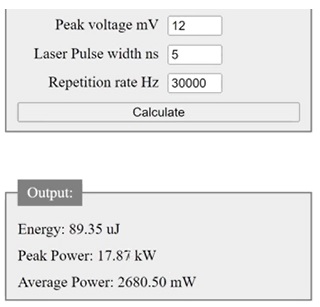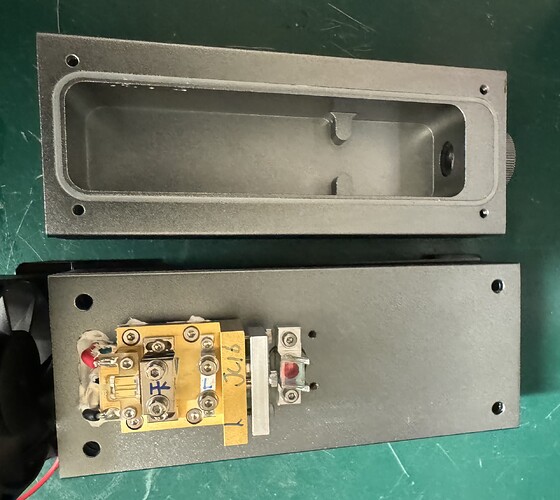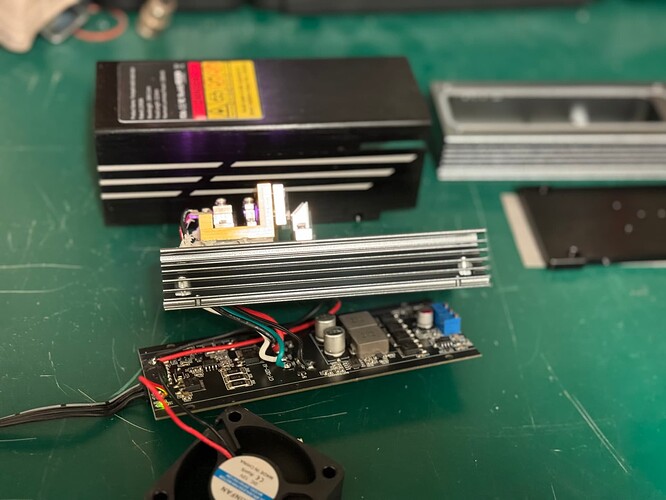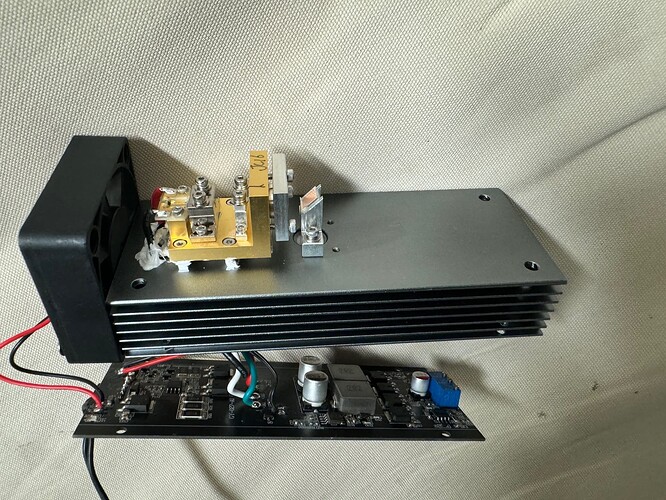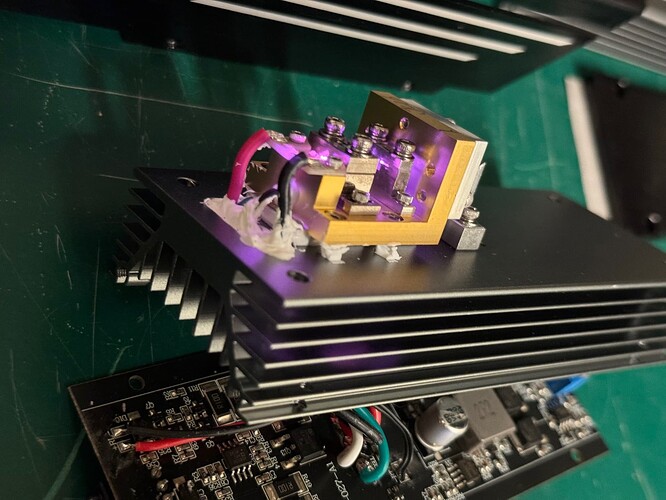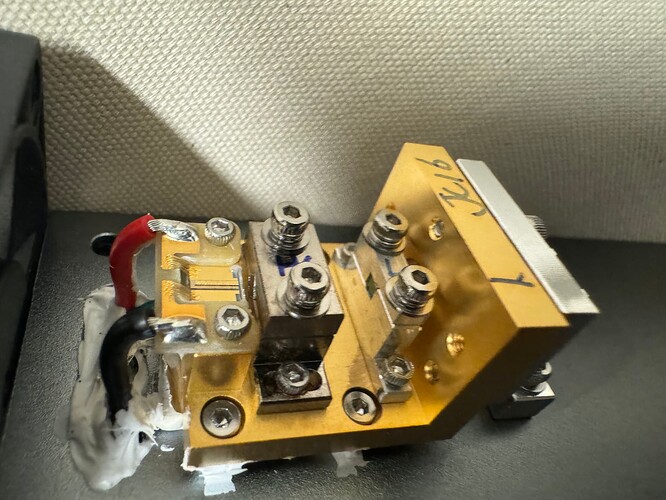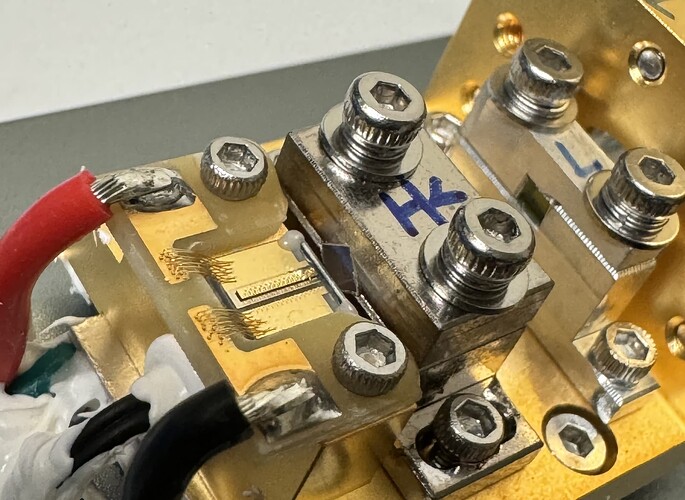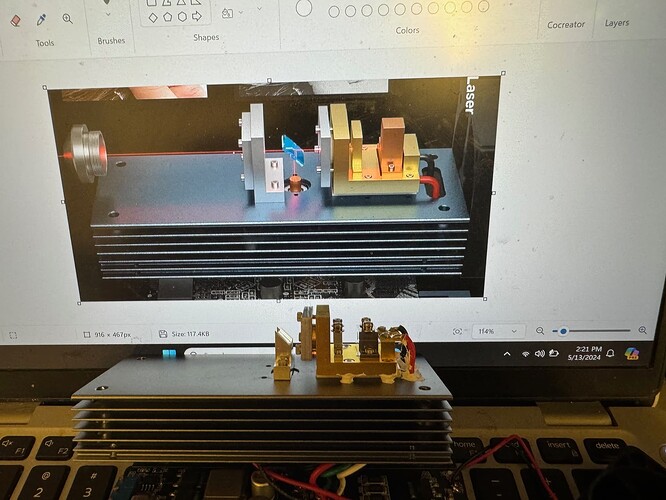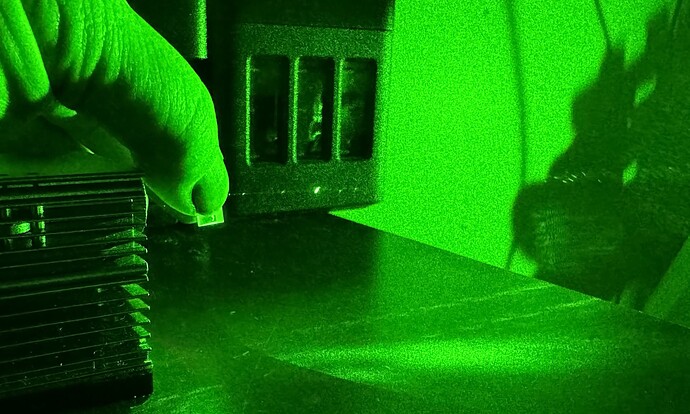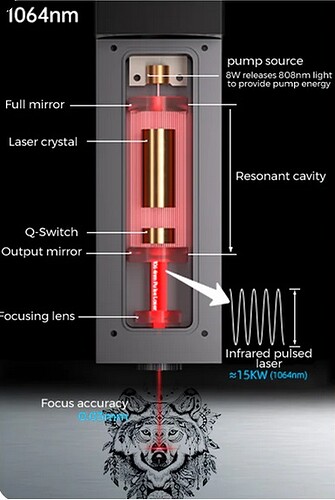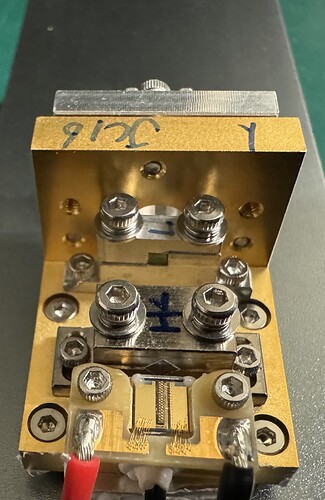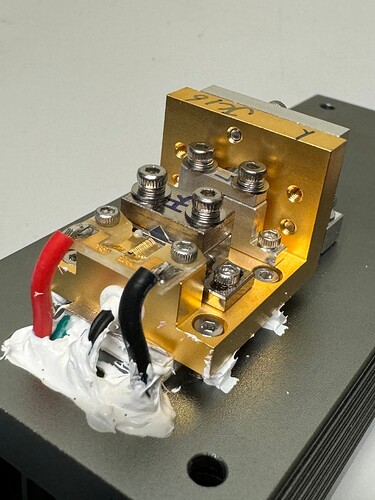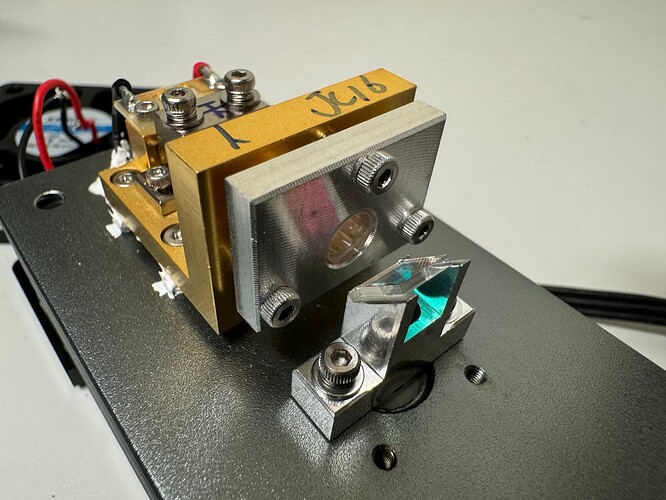Above: Nevermind the 52% off, they sell for $500 and under on ebay, the last one I bought cost $380 USD delivered through EMS.
Although the average power output at 1064 nm is 2 watts, the peak power is over 15 kilowatts for a 5 ns long pulse at a ~30 KHz repetition rate. With that high of a peak power, puttting a KTP crystal in front you can’t help but make plenty of 532 nm green, it’s awesome.
Attached is a photo of the inside of the LaserTree T20 2W engraver.
In the above photo, the red and black wires are the DC power input leads to the laser diode chip which appears to have been either epoxy or solder mounted to the brass. If the screws to the PC board feeding the diode are removed, when wiggling the little board I found the laser diode chip itself won’t move from its position being permanently fixed to the brass. Additionally, due to the gold wires tack welded to to chip, if the diode ever fails I don’t believe the unit is meant to be repaired, instead replaced as repair would likely cost as much or more than a new unit.
Located at the output of the ~808 nm laser pump diode is a FAC lens glued to the chip which is likely cut from a piece of fiber optic transmission line as is commonly found in cheap lasers to reduce the beam spread from the fast axis of the diode. I measured the power output from the FAC to be more than eight watts of power which is focused into a separate mount containing a ND:YAG. This YAG appears to have a high reflectance/HR mirror deposited upon the face of the crystal which has high transmittance (low loss) to 808 nm from the pump laser diode, but HR to 1064 nm (forming a cavity with the OC). The opposite or output end of this YAG has an AR coating.
Following the ND:YAG is a solid state CR:YAG Q-Switch mounted in its own holder which within the cavity is needed for the production of high peak power short nanosecond pulses, otherwise the output would only be low power CW. At the output of the Q-Switch, is the OC or output coupler optic which is partially reflective to 1064 nm completing the cavity. The OC mirror has a thin brass cone attached to it which swivels inside the assembly and is then locked into position via three screws when the optic is parallel with the end of the ND:YAG crystal, allowing the cavity to produce the required gain to overcome losses and output a beam of collimated 1064 nm near infrared light.
I measured the average output power at 1064 nm to be about 2.4 watts from each of the two modules I purchased, more than the specified 2 watts of output. The total current draw at this output is 2.7 amps at 12.0 VDC into the driver board with TEC.
Under the brass L is a TEC or thermal electric cooler, due to the white silicone the wires to the cooler are difficult to see in these photo’s.
There is a optic at a 45 degree angle on the output which passes 1064 nm through it but reflects the output of a red laser diode mounted on the bottom which is used to see where the laser will ablate and to focus the beam output, when the red is focused to a point on whatever you are engraving, the 1064 nm is also focused to a point, handy indicator. The 1064 nm beam is focused 22 mm in front of the output and produces a .03 mm spot, very small.
The top of the cavity enclosure has the focusing lens on the end of it, that’s why you don’t see it when removed.
This unit easily produces green with a KTP held at the correct angle and without a temperature controlled TEC attached to the crystal. Be careful not to let the 1064 nm hit your finger, it will blow a tiny hole right through it in a fraction of a second, ask me how I know… Actually, it can heat and burn a bit, but not enough to do much damage unless you hold your finger in the beam for a second or two, then maybe… I was joking about the hole, you can wave your hand in front of the beam of 1064 nm and feel hardly any hint of heat unless you hold still for long enough.
Here’s a YT video I found which brought this laser to my attention, after watching it, ordering one:
Edit:
Here’s a sellers drawing of what is inside, not what I found:
Also, Les’ Lab YT channel provided these calculations from the measurements he made:
